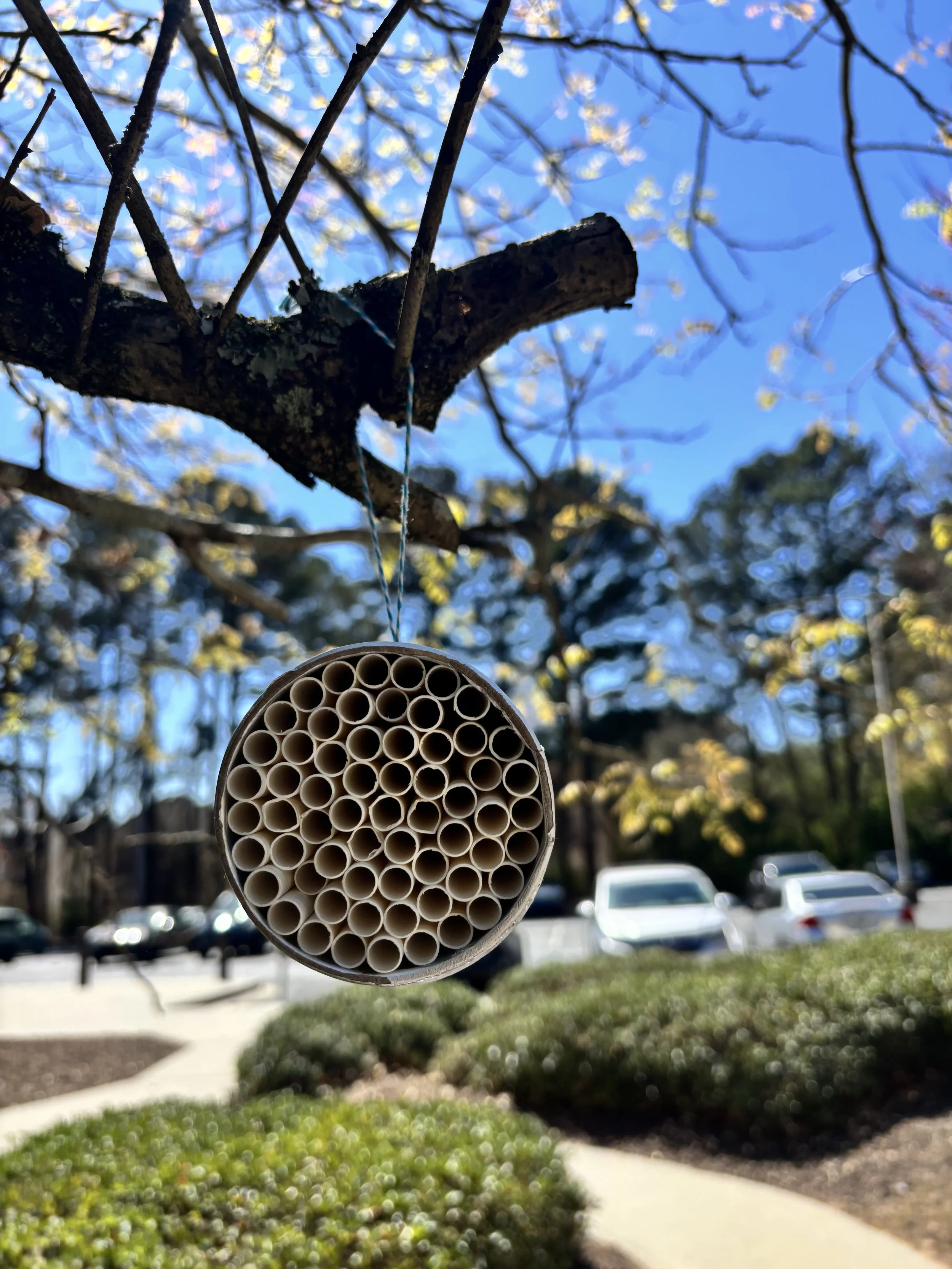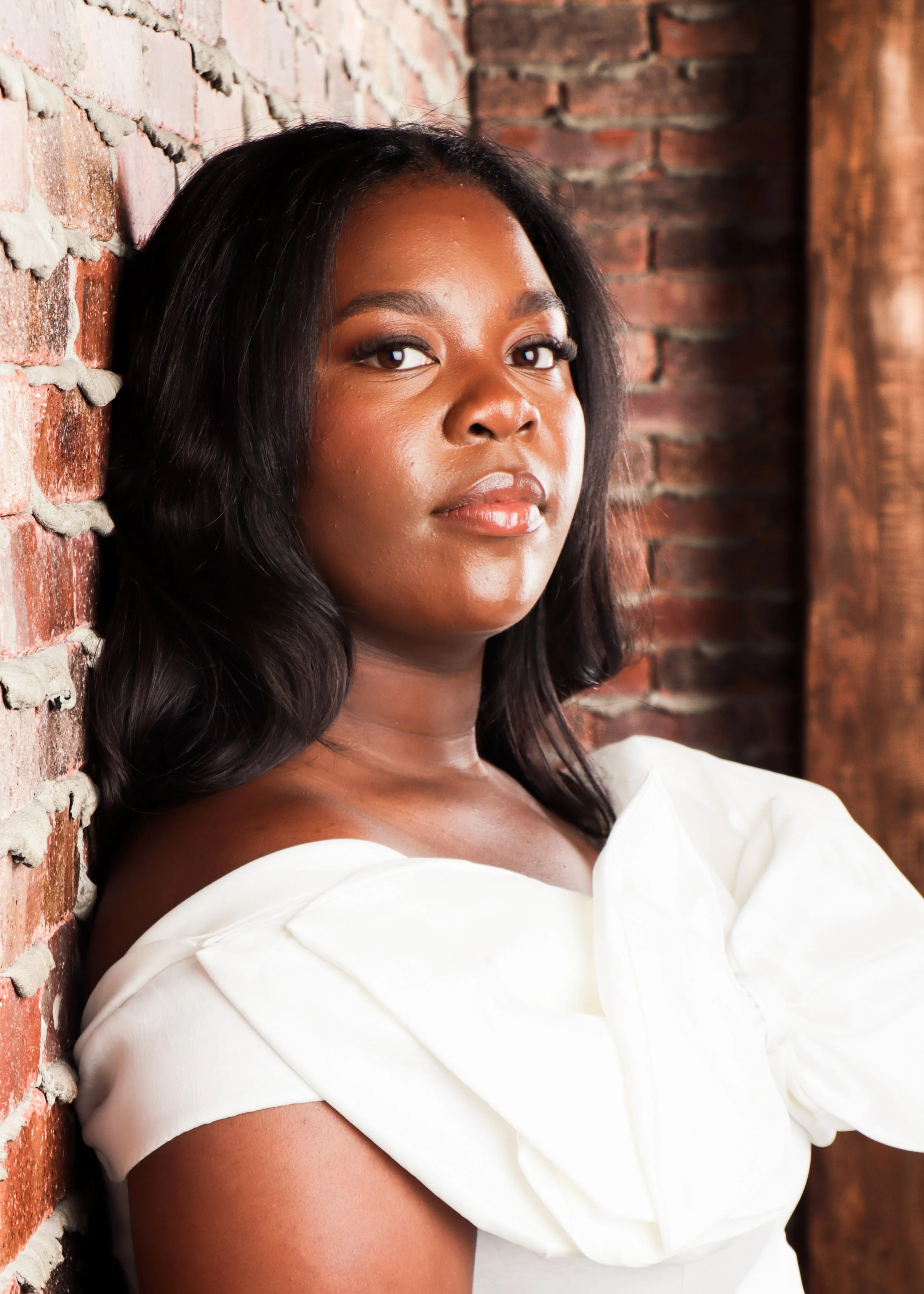
Complete Course on Mason Bees
Welcome to our engaging course on mason bees!
In this class, you’ll learn about the crucial role mason bees play in helping plants grow and how creating habitats for them can support local ecosystems. By the end of the course, you’ll have a solid understanding of why mason bees are important and how to construct a bee house using eco-friendly materials. Plus, you’ll leave with your very own sustainable mason bee house to enhance your garden and provide a safe home for these beneficial pollinators.
Join us to discover how you can make a positive impact on your environment while enjoying a few curated hands-on pollinator experiences for creatives just like you!
Materials you will need to have on hand to make a sustainable mason bee house
Containers that will serve as the exterior structure of your mason bee house. Native bees like homes that are no more than 6” deep. Smaller cozy tubes or blocks are great. They want to have some friends nearby, but high density units (a lot of tubes in a small space) tend to attract more pests and predators. We’d rather not make it easier for our native bee predators and pests to find our bee house.
Empty soup cans
1.4 oz Pringles grab and go snack packs (10 cans) These snacks come in a cardboard tube that is just the right size to work as a house for native mason bees, resin bees, and leafcutter bees, while also being workable in the hands of littles. Pop open the can, watch a lesson while you snack, then use the empty can to build your mason bee house!
Nesting tube materials. Native bees like tubes that have openings as narrow as 5/32” (.16” or 4mm) to as big as 1/2” (.5” or 13mm). Hollow stems from pithy plants like coneflowers or Joe Pye week work well. Non-plastic, unwrapped drinking straws are a nice option because they come in several sizes that bees really like: Regular or Cocktail straws provide .22” (6mm) openings, Giant straws are .29” (8mm), and Colossal straws are .4” (10mm) wide. It is best to select 2 or more different sizes tubes to attract a variety of bees to your bee house. It takes about 50 tubes to fill one soup can sized house.
6mm (.22”) biodegradable brown paper straws or 6mm white paper straws
6mm (.22”) plastic-free, biodegradable and compostable straws made of sugar cane
Colorful 10mm (.4”) Colossal paper straws or Brown Kraft Jumbo paper straws
12mm (.5”) super-wide Boba straws in a variety of colored stripe designs
Something to use to hang your bug abode. Native bee houses need to be somewhere protected from direct rain and wind, and close enough that you can check on the progress of the bees in the tubes regularly. Twine, string, ribbon, or an assortment of each, can be tied, taped, or hot glued to your bee house.
Scotch tape, vintage bee themed washi tape, sparkly duct tape, glue, glue gun & glue sticks, or something similar
Garden Shears to snip sticks, and Scissors to trim straws to fit inside your tube.
Duct tape. Because it always comes in handy somewhere and somehow!
Welcome to the Mason Bee Course! To get started, navigate through the course using the sidebar menu. Each chapter is clearly labeled, and you can easily access lessons like Meet Your Beekeeper and Mason Bee Life Cycle. Some lessons include videos, audio explanations, and images to help guide you through the content, such as Building the Mason Bee House and How to Maintain Your House. These sections are designed to be interactive, so feel free to pause and revisit any materials as needed.
Throughout the course, you’ll find downloadable resources, like shopping lists and instructional materials, including Amazon links to help you gather necessary tools. Interactive activities like the Pollination Station Scavenger Hunt and recap quizzes. This will help reinforce your learning and keep things fun. Some lessons also feature audio recordings, such as Mason Bee Traits and Habitat, where you can listen to our explanations and follow along.
The sidebar menu is your main navigation tool use it to jump between sections, revisit content, or follow the course in any order that works for you. Each chapter is organized to make it easy to navigate, and you can always return to previous sections for a refresher. If you have any questions or need help, feel free to reach out through the course's contact options. Enjoy learning and building your Mason Bee house!

“The keeping of bees is like the direction of sunlight”
-Thoreau
Meet The Mason Bee Masters
Chaynce Green
Cowriter , Intern
My name is Chaynce Green, and I attend the Gwinnett School of Mathematics, Science, and Technology. I have been an intern with Brookfield Apiaries since the fall of 2024, where I've had the opportunity to learn all about Mason Bees. Creating this course has been a rewarding experience, and I hope you find it informative and enjoy learning something new about these amazing pollinators!
Kamanni Owens
Cowriter, Intern
Hi! I’m Kamanni Owens, and I go to the Gwinnett School of Math, Science, and Technology. My internship with Brookfield Apiaries started in the fall of 2024 where I was able to learn about the significance that Mason Bees have on the environment. This internship allowed me to experience things that my younger self would never give a second thought, such as holding a bee! I hope that you gain something out of this course as I have gained experiences throughout my internship!








